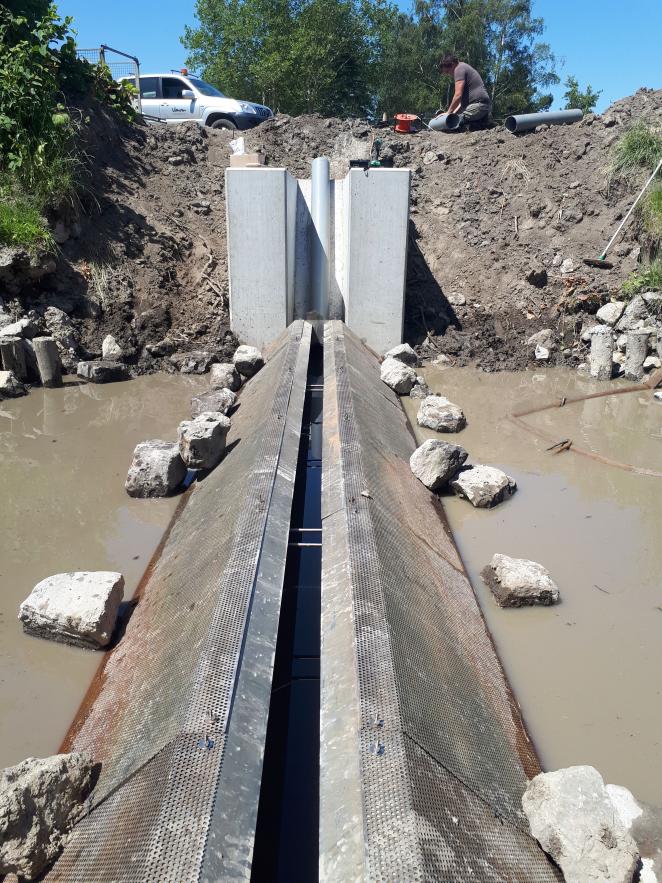
This is what the trap looks like under water during the construction work. (Photo: Paul van Loon)
The trap model used in this project was developed in 2018 by the VMM and tested in collaboration with the University of Antwerp in the Kleine Nete River close to Antwerp.
It consists of a rectangular container attached to the bottom that covers the full width of the river. The crabs fall into the channel as they migrate along the bottom. Since they cannot swim well, they run inside of the channel and reach the catch baskets on the shore via pipes attached to the end of the channel. Fish and amphibians can swim out of the channel, so this method has no bycatch compared to fish traps. Since 2018, about two million mitten crabs have been removed from the Kleine Nete River.
The simple design and robust construction of the trap make it possible to use it in principle in almost any watercourse. However, paved bank areas are particularly suitable. When choosing a location, it should also be considered that large numbers of crabs may have to be removed. Good accessibility of the trap site therefore simplifies both the installation and the removal of the crabs.
The trap can also be used as an effective barrier against crab invasion, for example to protect particularly sensitive waters. If regular emptying of the trap is not possible or too cost-intensive, the crabs can also be guided back into the water in front of the trap instead.
All data required for the construction of the traps will be available on this page soon.
